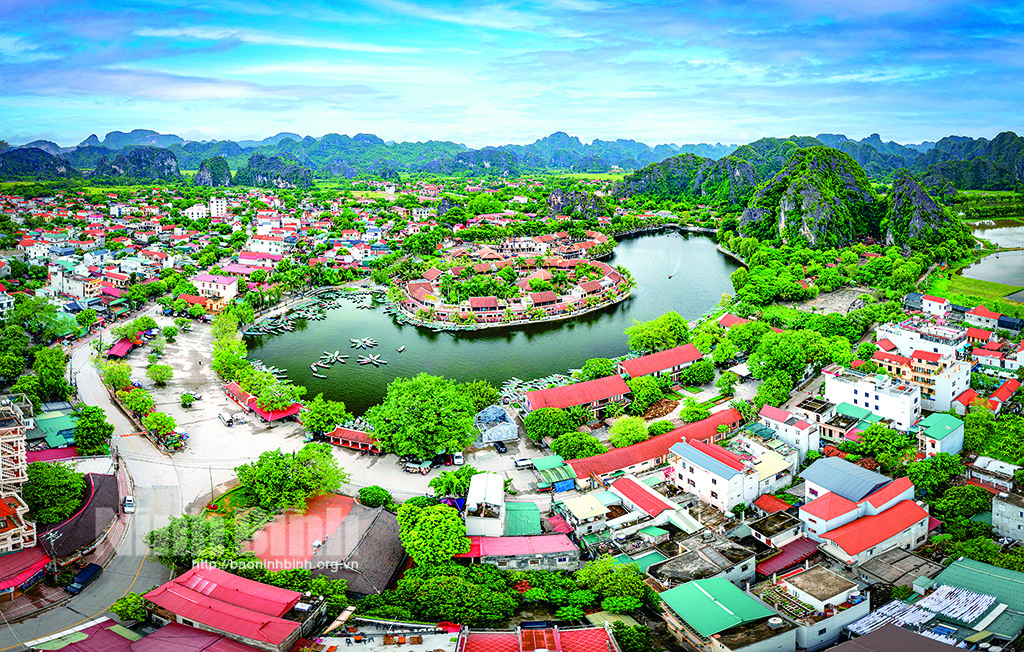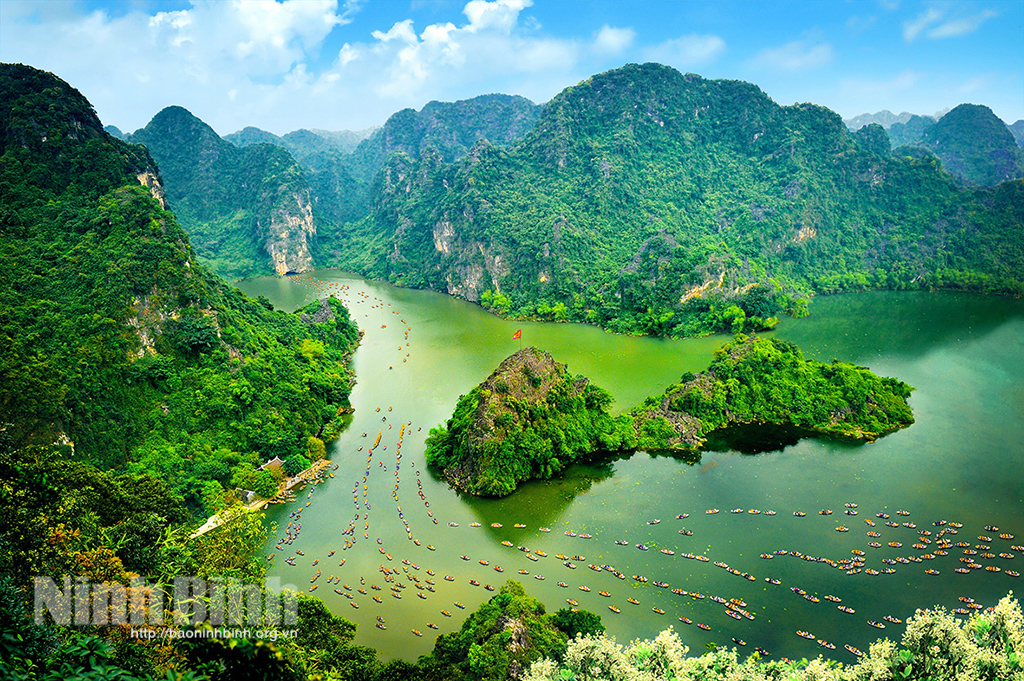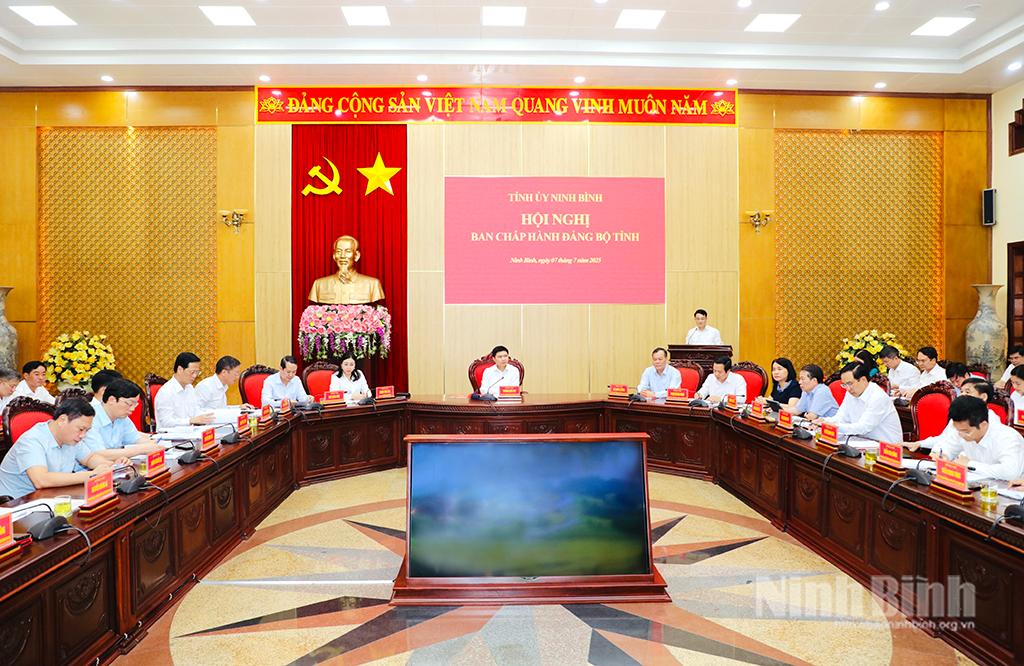Ninh Binh creates pillar for "green" growth

When it was re-established in April 1992, Ninh Binh was a poor province. However, Ninh Binh is striving to become a budget-balanced province this year, thus reducing a burden for the central budget.
Sustainable tourism
In the new normal period, Ninh Binh has always defined the importance of its own potential and strengths. Those are cultural and historical values of Hoa Lu ancient capital, the world cultural and natural heritage of Trang An, numerous intangible heritages, traditional festivals and traditional handicraft villages plus unique food cuisine.
The purpose of sustainable tourism development is to create a pillar that leads economic sectors in localities towards "green" growth, thereby dominating a "brown" economy with construction material exploitation and cement production, causing natural resource depletion, environmental pollution, and greatly affecting local people's lives.
A couple of years ago, Ninh Binh issued numerous resolutions, decisions and programmes on tourism development. In particularly, the Resolution of the 22nd Provincial Party Congress for the 2020-2025 tenure has defined investing in infrastructure serving tourism development as a spearhead economic sector is among three breakthrough steps to boost economic restructuring and shift from construction material exploitation industry to developing tourism, thereby creating a model of green growth.
To date, districts and cities in Ninh Binh have paid heed to zoning off areas to ban exploitation of lime stone and special-use forests; and preserve natural landscapes as well as historical relic sites.
That view has helped Ninh Binh to attract more investors to develop local tourist sites as safe, friendly and attractive destinations, namely Trang An ecological tourism site, Bai Dinh pagoda, Vedana Resort Cuc Phuong, and five-star hotels.
From 2010 to 2020, Ninh Binh attracted 83 projects invested in the tourism sector with more than 700 accommodation establishments built with over 8,000 rooms, of which many are rated as three or four-star ones.
In particular, the Trang An Scenic Landscape Complex was recognised as a world cultural and natural heritage site in 2014, raising Ninh Binh's position on the world and national tourism maps.
According to Director of the Department of Tourism Bui Van Manh since then, many domestic travel companies have choosen Ninh Binh as a must-see destination. In recent years, Ninh Binh has been ranked among attractive destinations by prestigious international travel websites, and among top 10 cities and provinces receiving the largest number of visitors.
After the COVID-19 pandemic was controlled, the province's tourism sector has rebounded strongly. In 2021, the province welcomed over 1.3 million tourists and earned 935 billion VND. The number of domestic visitors was down to 82.6% last year, but the figure reached 364,000 in July 2022 alone, a 6.3-fold rise from the same month last year.
To create momentum for the tourism industry to take off, Ninh Binh has approved a tourism development project in the period of 2021-2030, with a vision to 2045.
The project's task is to carry out a master plan on tourism development in a green and sustainable manner; with a focus on zoning off the national wildlife park, promoting and developing the value of Trang An heritage, and adjusting construction planning schemes of Trang An, Van Long, Cuc Phuong, and Dong Thai lake.
These projects would help Ninh Binh create diverse attractive tourism products, according to tourist experts.
In addition, the province has also paid due attention to developing clean and hi-tech industries such as automobile manufacturing and assembly, supporting industry, and clean agriculture towards developing special products to increase higher values.

Giving priority to clean industries
Ninh Binh has set criteria for attracting investment with priority given to projects that operate effectively, save land lots and ensure environmental protection.
According to the Department of Planning and Investment, investment attraction has been carried out openly and transparently, thus creating an open investment climate.
In the first half of 2022, the province granted licenses of investment to 11 projects, totalling nearly 1.2 trillion VND, and permitted 33 existing projects to increase their capital.
Besides, the province also steered local administrations and sectors to remove difficulties faced by firms who were greatly affected by the COVID-19 pandemic; and correctly assessed enterprises' production and business performance.
The Chairman and Vice Chairpersons of the provincial People's Committee attend monthly dialogues with businesses to collect opinions and suggestions and to soon remove difficulties for them to recover and develop after the COVID-19 pandemic.
Chairman of the provincial People's Committee Pham Quang Ngoc said that Ninh Binh will not attract investment at all costs.
Before 2010, Ninh Binh focused on exploiting limestone mountains to produce cement. Its industrial production value increased sharply but revenue was small. The province also built industrial zones and clusters to attract investors, thus providing jobs for local people.
In 2011, the province shifted from "brown" to green growth.
It said no to new cement production projects while reducing the scale of cement production from 13 million tonnes per year to 9 million tonnes; and giving priority to high-quality and environmentally friendly projects.
Thanks to the flexible transition of growth model, in the first six months 2022, the province's economic indexes recovered strongly.
The industrial production index increased by 1.08% as compared to the same period last year. The number of tourist arrivals was nearly 1.77 million, a 2-fold rise while the budget collection inched up 1.1%. However, the province's GRDP remained low, at 3.53%.
Ninh Binh realised that it needs to fully tap sectors that have large room to develop; enhance its internal strengths and step up administrative reform to ensure sustainable growth and increase incomes and improve living conditions of local people.
Translated by Nguyen Thuy


